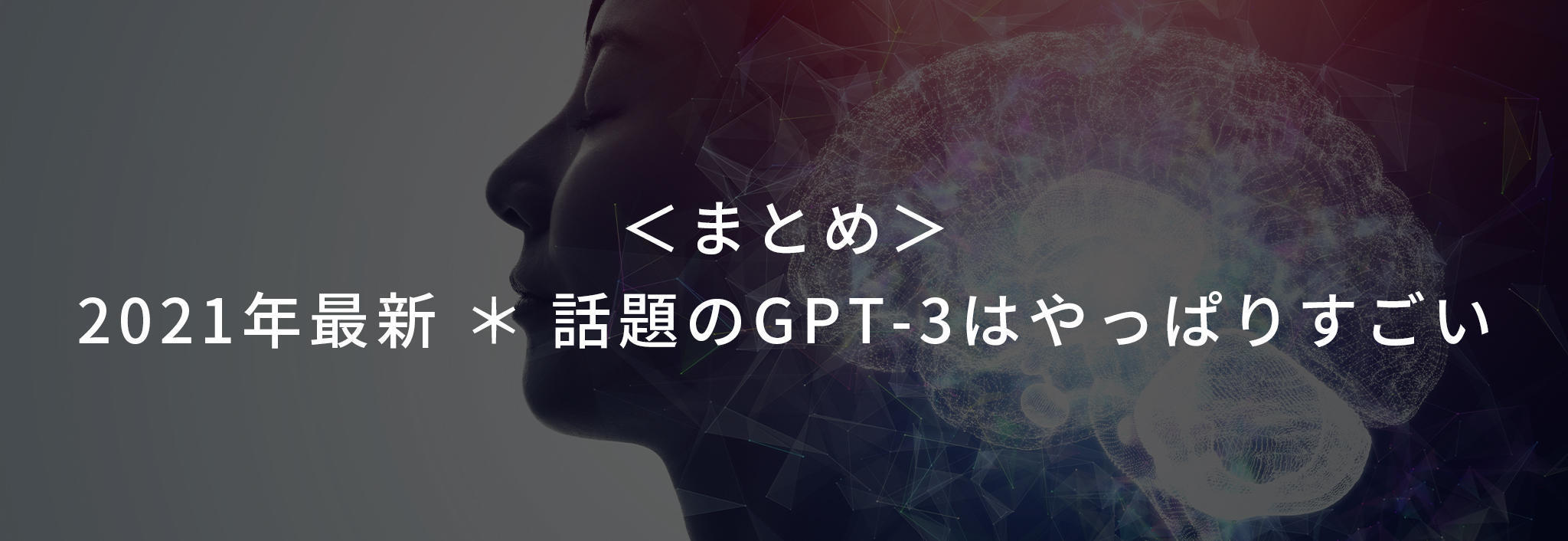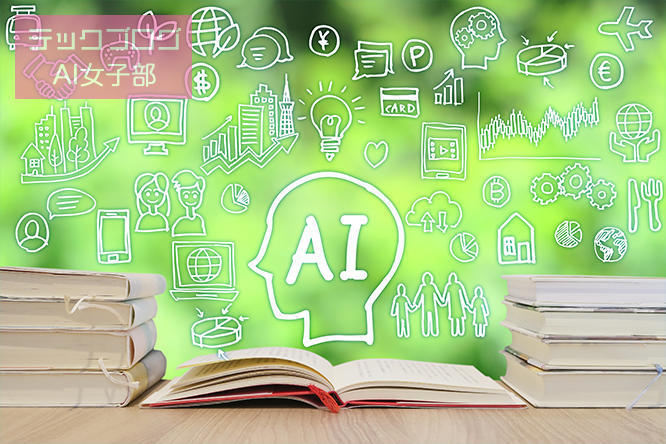
こんな方におすすめの記事です
- 最新のAI「GTP-3」についての概要をつかみたい
- 言語生成モデルの最新動向を知りたい
この記事を読み終えるのに必要な時間
10分
はじめに
こんにちは!
今回の記事は最新のGPT-3についてです。
GPT-3は最新版の言語モデルですが、その話題性は世界中で高まっています。
今回は、この最新モデル「GPT-3」の概要と今後の展望についてお届けします!
GPT-3 (Generative Pre-Training3)とは
GPT-3とは、OpenAIが作った「文章生成言語モデル」です。(OpenAIは、人工知能を研究している非営利団体。)
GPT-3は、その団体が作っている最新版の文章生成言語モデルです。
“文章生成言語モデルって何ができるの?”というところですが、
一言で言うと、「ちょっとした指示文から、まるで人が書いたような自然な文章やプログラムのコードの生成を自動でしてくれるもの」です。
これがいかに革命的なものなのか、これを実際に使用するとどのようなことが実現できるのか、詳しく見ていきましょう。
各界の反応
この最新モデルがリリースされてから、各界でどのような反応が得られていたのでしょうか。
その一例を見ていきましょう。
<MicrosoftとOpenAIのコラボレーションについて>
2020年9月22日、米Microsoft社がGPT-3の独占ライセンスを取得したと公式ブログにて発表しました。
Microsoft社EVPであるケビン・スコット氏は公式ブログの中で、
「GPT-3モデルによって解き放たれる商業的、創造的な可能性の範囲は非常に広く、本当に斬新な能力を持っている」
「文章生成のような分野での可能性は私たちが机上に持ち込むアイデアやシナリオによってのみ制限される」
と今後の期待について述べています。
特徴①
ここから、具体的にこのGPT-3でどんなことができるようになるのか、その特徴を見ていきましょう。
・数行の文章から、“自然な”文章を作ることができる!
例えば、あなたが簡単な3行ほどの概要を示した文章を入力したとします。
するとその文章に肉付けをして、人間が作成したような、 “自然な”文章を生成してくれるのです。
有名な例として、分散システムの開発者向けツールを構築するOpenZeppelinの創業者である、Manuel Araoz氏が書いたブログ記事があります。
その記事では、最後に「この文章はGPT-3が作成したものである」と衝撃の事実を発表しています。
特徴②
・ウェブデザインも自在に扱える!
特徴①と同じ要領で、ソースやコードデザインも自由に生成することができます。
例えば、「googleのロゴ 検索ボックス それらの間に隙間を入れて“google検索”とI’m Feeling Lucky“という2 つのライトグレーのボタン 検索ボックスは広く」と入力するだけで、Googleとほぼ見た目が同じデザインを作成することができるのです。
・プログラミングもできる!
もう皆さんお分かりでしょう。プログラミングもできてしまいます。
例えば、「500円収入 300円支出 残高を表示」という指示文を入力すると、それを実現できるプログラムの作成ができてしまうのです。
こちらのパートでは、「 ウェブデザイン“も”」「プログラミング“も”」というふうに記載をしましたが、ある見解では言語生成よりもプログラミング生成の方が早期に実用化される可能性が高い、と言われています。
ネット上のデータを使って学習するAIは、学習データの偏りによってバランスの良い回答を出せない、とよく指摘されています。
そのため、Web上で見つけられない知見は反映できないのです。
プログラミング言語であれば、ネット上に多数のソースコードが公開されています。
そのため、自然言語処理よりも早期に実用化できる可能性は高いのではないか、と言われています。
特徴③
GPT-3では前述した特徴以外にも、できるようになることが沢山あります。
その一部を紹介していきましょう。
<デザインの自動生成>
デザインの自動生成においても、大きな躍進が実現可能になるでしょう。
例えば、デザイナーがものづくりをする上で、人が興味を持つコンテンツの作成を自動で行なったり、ABテストを自動化したりできるため、プロダクトを最適化するまでの工数を大幅に削減することができます。
また、それらの発展により、AIが絵画など芸術を創作する未来に繋がっていくかもしれません。
<文章の自動生成>
文章の自動生成においては多くの人が“あったら便利!”と思うようなことが実現できるようになります。
例えば、チャットでのやり取りを汲み取ってマニュアルを自動で生成する、音声を入力するだけで構造的な文章を自動で生成するなどです。
また、動画からその内容の要約を自動で生成することもできるようになります。
このように、これまで人力で実施しなければいけなかったようなことも、自動で生成することができるようになります。
限界①
とはいえ、このようなツワモノにも限界はあります。
まずは、「物理に弱い」という点です。
例えば、「チーズを冷蔵庫に入れたら溶けるのか」という問いに対して、人間なら当然「溶けない」と答えますが、GPT-3は「溶ける」と回答する可能性があります。
物理的に人間が理解している“自然の摂理”の解釈を誤ることがあります。
限界②
次に、「生成した文章やデザインの矛盾に気づかない/今の時代では受け入れられない価値観かどうかの判別がつかない」という点です。
生成した文章の冒頭で述べていることと最後のまとめ部分で述べていることが全く違ったとしても、それに気づくことができません。
言葉そのものの意味を理解しているわけではないからです。
また、自然言語処理の中でも、ディープラーニングを応用した手法として発展を遂げてきたGPT-3という言語生成モデルは、膨大なデータを学習させて作られたものです。
よって、過去の文献などのデータを学習させています。
過去のデータを参照している、ということは現代の世の中では受け入れられない価値観等も含まれている、ということです。
そのため、それが今の世の中ではタブーなことかどうか判別がつかないのが問題です。
限界③
限界点の3つ目は、「膨大な費用と時間がかかってしまう」という点です。
GPT-3は膨大なパラメータを誇っているため、モデルが大きいと学習させるのに時間と費用がかかってしまいます。
今後の展望
スタートアップやテクノロジー企業でGPT-3を活用したアプリケーションの開発の試みが盛んです。
例えば、以下のような例があります。
・オンラインショッピングにおける効果的な感情分析
・中小企業のための、ウェブサイトの自動生成
・次世代のリアルタイム自動同時翻訳
・ユーザーの感情分析による、SNS上の有害コンテンツの判別
日本では2020年11月25日、LINEがGPT-3を活用して日本語に特化した「超巨大言語モデル」の開発に着手したと発表しました。
まとめ
いかがだったでしょうか。
今回は、GPT-3について、概要と機能の説明についてまとめてみました。
GPT-3は膨大なパラメータを持っている最新版の文章生成言語モデルのことで、今後の世界に大きな影響を与えることが期待されています。
これまで人力で行なっていた文章生成やプログラミング、ウェブデザイン生成もできるようになることによって、今後のDX推進に大きな影響を及ぼすことでしょう。
ただ、まだまだ不十分な点もあります。
物理的観点の欠落や、社会的な常識の判別がつかないこと、学習させるのに膨大な時間と費用がかかってしまうことなど、これらの進化が楽しみなところですね!
各界大注目のGPT-3をこれからも注目し続けていきたいと思います。


